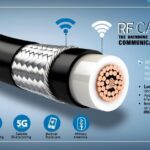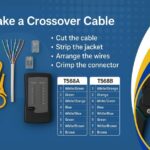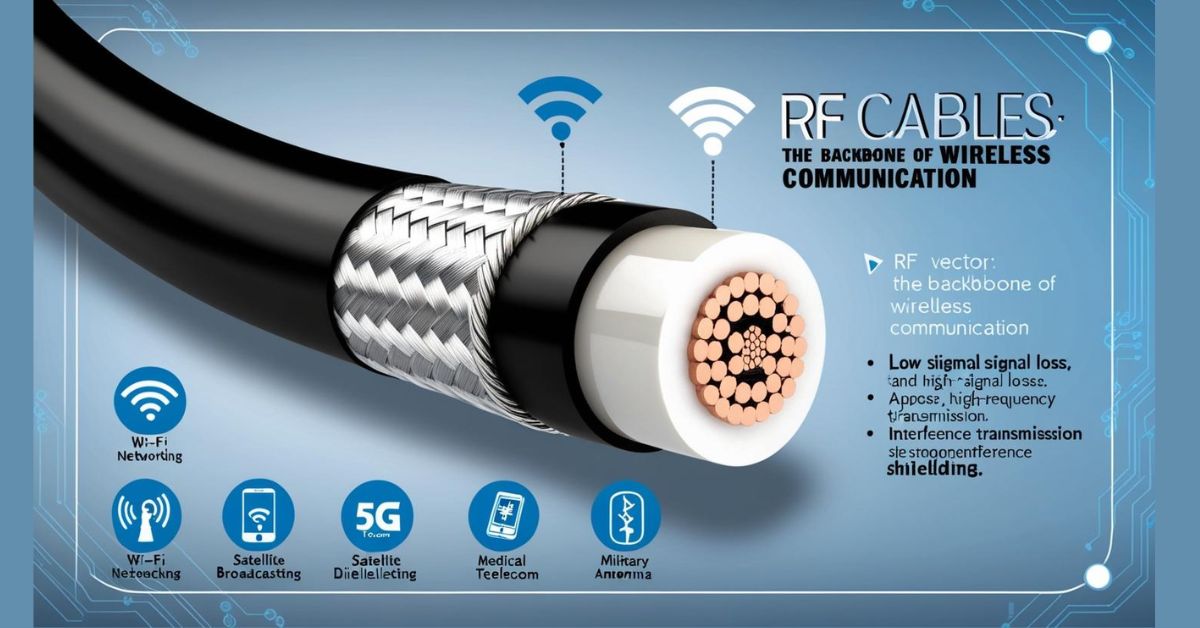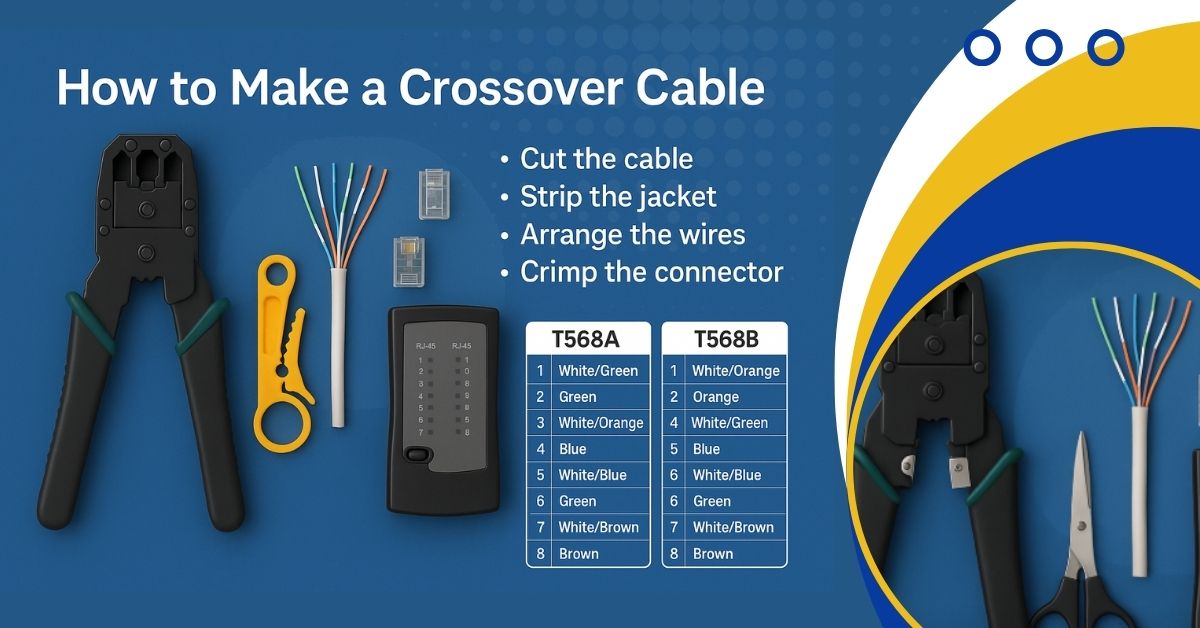In today’s world of high-speed communication and wireless technology, RF cable plays a crucial role in maintaining signal quality and ensuring smooth data transmission. Whether you’re setting up a home entertainment system, working on a telecommunications project, or dealing with satellite or radio communication, understanding RF-cables is essential.
This comprehensive guide will help you understand what RF cables are, how they work, the different types available, and how to choose the right one for your application.
What is an RF Cable?
An RF cable, short for Radio Frequency cable, is a type of coaxial cable specifically designed to transmit radio frequency signals. These signals typically range from 3 kHz to 300 GHz and are used in various applications, including televisions, radios, satellite communication, and wireless networks.
Key Components of RF Cable
RF cables are built with a layered structure that enhances signal integrity and reduces interference:
- Inner Conductor: This is usually a copper wire that carries the signal.
- Dielectric Insulator: Surrounds the inner conductor and helps maintain signal strength.
- Shielding: A metallic shield (braided or foil) that protects against external electromagnetic interference (EMI).
- Outer Jacket: A plastic coating that provides durability and environmental protection.
This unique structure allows RF-cables to transmit high-frequency signals with minimal signal loss and interference.
Why Are RF Cables Important?
The primary purpose of an RF cable is to ensure that high-frequency signals travel from one point to another without significant degradation. Poor-quality or incompatible cables can cause signal attenuation, noise, or loss of data, which can disrupt communication or result in poor-quality audio and video transmission.
Types of RF Cables
Choosing the right RF cable depends on your needs and the frequency range you’re working with. Below are the most common types of RF-cables used in various industries:
1. RG-6 Cable
- Frequency support: Up to 3 GHz
- Commonly used for cable TV, satellite systems, and broadband internet
- Offers better shielding than RG-59
- Ideal for residential and commercial applications
2. RG-59 Cable
- Lower frequency support than RG-6
- Common in CCTV security systems
- Suitable for short-distance analog video signals
- More flexible and easier to handle in tight spaces
3. RG-11 Cable
- Thicker and less flexible than RG-6 and RG-59
- Supports longer runs with reduced signal loss
- Used in large buildings or network backbone applications
- Suitable for HDTV and long-distance installations
4. LMR Series Cables (e.g., LMR-400)
- Low-loss and flexible RF cables
- Used for high-frequency and high-performance applications
- Ideal for antenna systems, repeaters, and outdoor wireless setups
- Excellent for frequencies up to 6 GHz and beyond
5. Semi-Rigid and Conformable RF Cables
- Typically used in aerospace, defense, and medical applications
- Offers stable electrical performance
- Can be shaped for custom installations without affecting performance
Common Applications of RF Cables
RF cables are widely used across industries due to their reliability and performance. Here are some of the most common applications:
Telecommunications
RF cables are crucial in mobile communication, radio towers, and Wi-Fi systems. They connect antennas, base stations, and routers to deliver seamless wireless communication.
Broadcasting and Television
TVs, cable boxes, and satellite dishes rely on RF-cables like RG-6 to transmit both audio and video signals. These cables ensure high-quality viewing experiences without noise or static.
Military and Aerospace
RF cables are used in radar systems, aircraft communication, and military-grade satellite systems. These environments require highly durable, low-loss cables that can handle extreme conditions.
Medical Devices
In medical imaging systems like MRI machines and patient monitoring tools, RF cables provide accurate data transmission while resisting electromagnetic interference.
Test and Measurement Equipment
Laboratories and industrial settings use RF cables in signal generators, spectrum analyzers, and oscilloscopes to maintain signal integrity during testing.
Choosing the Right RF Cable: What to Consider
With so many options available, picking the right RF-cable can be challenging. Here are some important factors to keep in mind:
1. Frequency Range
Make sure the cable supports the frequency range of your equipment. Higher frequencies require cables with lower signal loss and better shielding.
2. Cable Length
Longer cables introduce more signal loss. If you need a long run, consider using low-loss cables like RG-11 or LMR-400.
3. Signal Type
Analog and digital signals behave differently. Choose a cable that matches the signal type and application to avoid distortion or lag.
4. Environmental Conditions
Outdoor applications require weatherproof and UV-resistant outer jackets. For indoor use, flexibility and ease of installation are more important.
5. Connector Compatibility
Check that the connectors (e.g., F-type, BNC, SMA, N-type) match your devices. The wrong connector can cause signal degradation or even damage your equipment.
How to Install and Maintain RF Cables
Proper installation and maintenance can significantly extend the lifespan and performance of your RF -cable system.
Installation Tips:
- Avoid sharp bends and kinks that may damage the cable’s internal structure.
- Use appropriate connectors and tighten them properly to avoid loose connections.
- Keep RF cables away from power cables and sources of EMI.
Maintenance Tips:
- Regularly check for wear, corrosion, or loose connections.
- Clean connector interfaces with a soft cloth and alcohol if needed.
- Replace any damaged cables immediately to avoid signal loss.
RF Cable vs. Other Signal Cables
RF cables are often compared with other types of signal cables such as HDMI, Ethernet, and fiber optics. Here’s a quick comparison:
| Feature | RF Cable | HDMI | Ethernet | Fiber Optic |
| Signal Type | Radio Frequency | Digital Audio/Video | Data | Light Signals |
| Interference Resistance | High | Moderate | High | Very High |
| Distance Support | Moderate | Short | Long | Very Long |
| Cost | Low to Moderate | Moderate to High | Low | High |
| Use Cases | TV, Satellite, Antennas | Home theater | Networking | Telecom, Internet |
RF-cables are best suited for radio frequency transmission, particularly in situations where high-quality shielding and broad frequency support are essential.
Final Thoughts
RF cables are indispensable in today’s world of digital communication, television broadcasting, and wireless networking. Understanding the types, applications, and technical specifications of RF-cables can help you choose the perfect cable for your project, whether it’s a home setup or a high-tech commercial application.
From RG-6 to LMR-400, the right RF cable ensures optimal performance, clear signal transmission, and long-term reliability. Make sure to consider the frequency, cable length, shielding, and connector compatibility when making your choice.
FAQs
What is an RF cable used for?
RF cables are used to transmit radio frequency signals in applications like TV antennas, satellite systems, radios, wireless networks, and telecommunications equipment. They help maintain signal integrity and reduce interference during transmission.
What does RF stand for in RF cable?
RF stands for Radio Frequency. It refers to the range of electromagnetic frequencies used to carry signals in communication systems, usually from 3 kHz to 300 GHz.
What’s the difference between RG-6 and RG-59 RF cables?
RG-6 cables offer better shielding and support higher frequencies compared to RG-59, making them ideal for satellite and cable TV. RG-59 is typically used in CCTV and short-distance analog applications due to its thinner core.
Can I use an RF cable for HD TV?
Yes, you can use high-quality RF-cables like RG-6 or RG-11 for HD TV connections. However, they transmit analog signals, so for true HD video, HDMI cables are generally preferred.
Are RF cables the same as coaxial cables?
All RF cables are coaxial cables, but not all coaxial cables are suitable for RF transmission. RF cables are specially designed coaxial cables optimized for radio frequency signal transmission with minimal loss.
Do RF cables support internet connections?
Yes, RF cables like RG-6 are commonly used by internet service providers to deliver broadband via cable modems. They are part of the coaxial infrastructure that supports cable-based internet.
What is the maximum length of an RF cable before signal loss occurs?
Signal loss increases with length. For example, RG-6 may begin to degrade beyond 100 feet, while RG-11 can handle longer runs up to 200 feet or more. Use amplifiers or low-loss cables for long-distance applications.
What types of connectors are used with RF cables?
Common RF cable connectors include F-type, BNC, SMA, N-type, and TNC. The choice depends on your device and application requirements. Matching the correct connector is essential for performance.
Can I install RF cables outdoors?
Yes, but make sure to use RF cables with UV-resistant and waterproof jackets designed for outdoor use. Outdoor-rated cables prevent weather-related damage and signal degradation.
How do I minimize interference in RF cables?
To minimize interference, choose cables with strong shielding (braided or foil), keep them away from power lines, and ensure proper grounding. Using ferrite cores and high-quality connectors can also help reduce electromagnetic interference (EMI).










